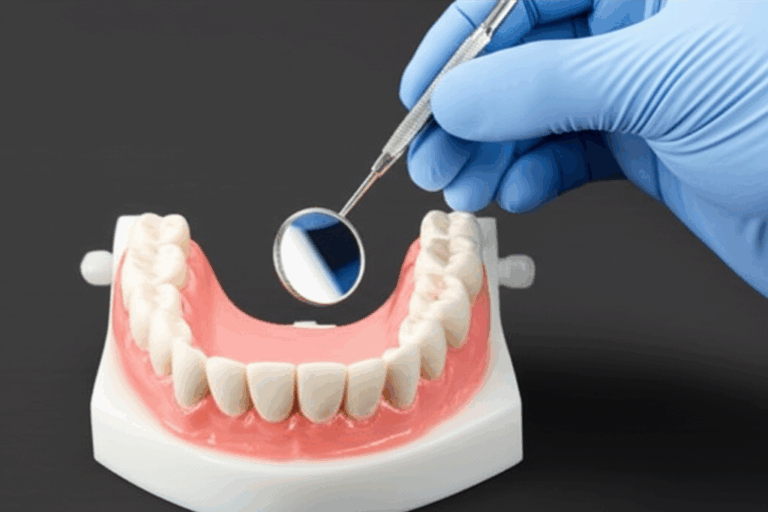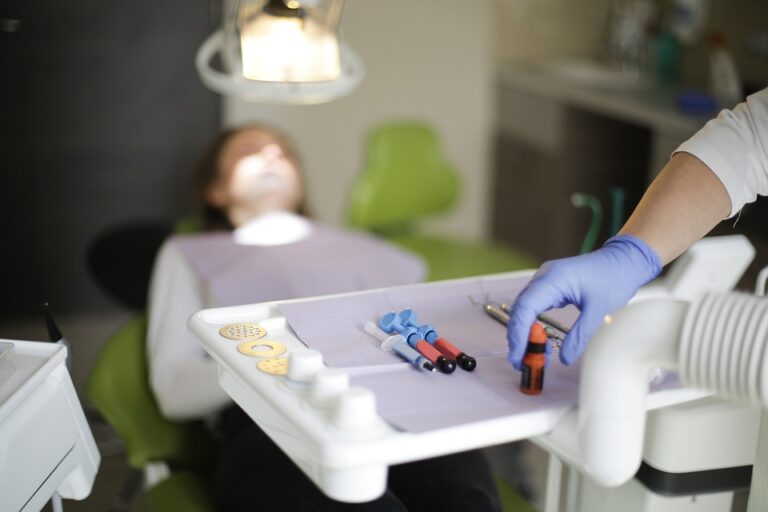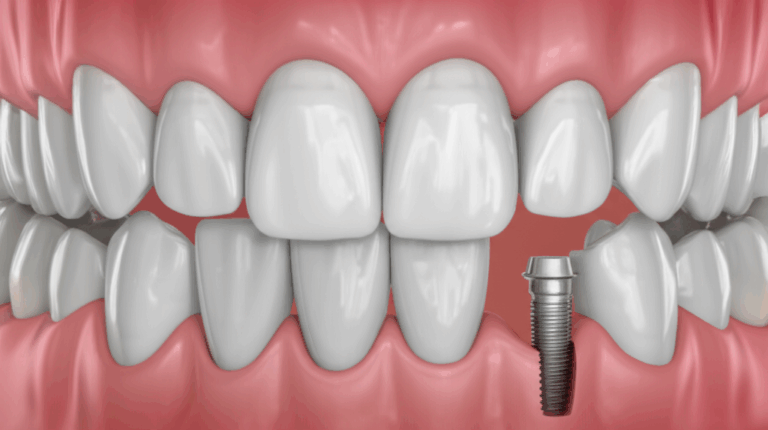
Can Dental Problems Cause Migraines?
For years, migraines was something that took over my life. They wasn’t just headaches; they was huge things that would steal days from me, leaving me in a dark, quiet room, just hoping to feel better. I blamed stress, some foods, not enough sleep, and even the weather. I saw doctors, brain doctors, and other specialists, but the fixes was always for a little while, like putting a small bandage on a big problem. It wasn’t until I happened to talk to a new dentist that a surprising idea came up—one that would change everything. He asked me a simple question: “Has anyone ever looked at your jaw?”
If you’re reading this, chances are you’re stuck in a similar fight. You’re tired of the pain, tired of not knowing when it will happen, and tired of feeling like you’ve tried everything. This article is the story of my journey. I’m going to walk you through how I finded out the hidden link between my dental health and my migraines. I’ll explain the science in a simple way, share the dental problems I had, and tell you the exact steps I took to get a diagnosis and, at last, feel better for good. This isn’t just an idea; it’s my real story of what I learned, and it might have the answer you’ve been looking for.
### What’s in this Article
- The Migraine Puzzle: When It’s Not the Usual Stuff
- Putting it Together: How Your Jaw and Teeth Can Make Your Head Hurt
- The Main Dental Problems: What I Had
- How I Got a Diagnosis: Finally Getting Answers
- The Plan That Changed My Life: Getting Better
- How to Talk to Your Doctor or Dentist: A Simple Guide
- My Last Thoughts: A Life with No More Headaches All the Time
The Migraine Puzzle: When It’s Not the Usual Stuff
I remember the pattern so clearly. It often start as a dull ache behind one eye, a bad little hint of what was coming. In an hour, that hint would get louder and turn into a huge amount of pain, a pounding, throbbing pain that seemed to match my heartbeat. Light become my enemy. Sound was too much to handle. I planned my life around being scared of the next attack, canceling plans and missing big moments.
My trip through the medical system was a confusing mess. I kept a detailed migraine diary, carefully writing down my food, my sleep, and my stress. I cut out chocolate, cheese, and red wine. I tried magnesium pills and had a strict sleep time. A brain doctor gave me strong medicines that left me feeling foggy and not myself, and while they sometimes made the worst pain a little better, they never stopped the migraines from coming back.
I feeled like a detective in a case with no clues. Every lead went nowhere. The main idea was that my migraines was “idiopathic,” a fancy medical word that, to me, just meant “we don’t know why this is happening to you.” The big discovery came from the most surprise place: a normal dental check-up. I had changed to a new dentist after moving, and when he first checked me, he was really careful. He didn’t just look at my teeth; he felt the muscles around my jaw and neck, asking me to open and close my mouth a few times.
He stopped, and looked like he was thinking. “I notice a lot of wear on your back teeth,” he said, “and the muscles in your jaw are very tight. Do you ever wake up with a sore jaw or headaches?”
I almost fell out of the chair. “I wake up with a headache almost every single day,” I told him. “And I get chronic migraines.”
He nodded, not like he was surprised, but like he understood. “I think we might have found a big piece of your puzzle,” he said. “Let’s talk about how your bite and jaw could be connected to your head pain.” For the first time in years, I felt a little bit of real hope. It wasn’t a prescription or someone telling me they didn’t know; it was a new direction, a clue that finally made sense.
Putting it Together: How Your Jaw and Teeth Can Make Your Head Hurt
Before that talk, the idea that my teeth could cause a migraine seemed weird. How could a problem in my mouth made such bad pain inside my head? My dentist explained it to me in a way that was so simple and made so much sense, it was like a lightbulb turning on. It all is about two main ideas: referred pain and a very important nerve.
Understanding Referred Pain: A Simple Example
My dentist give me a great example. He said, “Imagine you pinch a cable in the wall of your office. The problem is in the wall, but what happens is the computer on your desk flickers and stops working. You could spend all day trying to fix the computer, but until you fix the pinched cable in the wall, the computer will never work right.”
Referred pain works the same way. The real problem (the pinched cable) is in one place, but you feel the symptom (the broken computer) in another place. Your body has a lot of nerves all connected, and when one spot is bothered, sore, or under stress, it can send pain signals on these nerve roads to a totally different part of your body. In this case, the jaw and teeth are the “wall,” and the head is the “computer.”
The Trigeminal Nerve: The Main Road of Face Pain
The “pinched cable” here is often the trigeminal nerve. You don’t need to be a brain scientist to get this, so stick with me. Think of the trigeminal nerve as a big main road for feeling in your face. It has three main parts that connect to your forehead and eyes, your cheeks and top jaw, and your bottom jaw.
See something important? All the main things are on this one road: your jaw muscles, your teeth, and the spots where migraines love to happen. When something is wrong with your jaw joint, your bite, or your teeth, it makes everything always bothered and stressed. The muscles squeeze, the joint gets sore, and all of this “noise” floods the trigeminal nerve. The nerve get overwhelmed and starts shooting off pain signals, which your brain thinks is a terrible headache or a full migraine. Your brain doesn’t know the problem is in your jaw; it just knows the nerve connected to your temple is screaming in pain.
The Main Dental Problems: What I Had
Once I understood the how, my dentist and I started looking for the what. It turn out I was dealing with three problems at once, and each one was adding to the “nerve noise” that was starting my migraines.
Temporomandibular Joint Disorder (TMD/TMJ): The Quiet Headache Maker
For years, I’d noticed a little clicking sound when I chewed, but I thought it was just a weird thing I did. I also often had a full or aching feeling in my ears, which I had always blame on allergies. It turns out these was normal signs of Temporomandibular Joint Disorder, or TMD.
TMD isn’t one single problem but a bunch of issues with the temporomandibular joint (TMJ)—the hinge that connects your jaw to your head. When this joint and the muscles around it are stressed, sore, or not lined up right, it makes a bunch of problems. For me, the muscles in my temples and cheeks was hard as a rock from always trying to hold my jaw that wasn’t working right. This muscle tightness that never went away was a direct cause of my tension headaches, which would then get worse and turn into migraines.
Bruxism (Teeth Grinding): The Night Fight I Didn’t Know I Was Having
The wear and tear my dentist saw on my teeth was the clear sign for another problem: bruxism, the medical name for teeth grinding or clenching. I was a classic night grinder. While I slept, my jaw was fighting with itself, squeezing with a lot of force for hours.
Think about it: the muscles of your jaw are some of the strongest in your body. When you clench them all night, you’re making them run a marathon with no rest. It’s no wonder I was waking up with a sore jaw, a stiff neck, and a headache that already started. The pressure all the time was not only wearing down my teeth but also keeping my jaw muscles and, because of that, my trigeminal nerve on high alert.
Malocclusion (A Bad Bite): When Things Don’t Line Up
The last piece of my personal puzzle was malocclusion, which just means a “bad bite.” In a perfect world, your top and bottom teeth should fit together like perfect gears. When they don’t, your jaw has to move to a weird spot to make them meet.
For me, an old crown that was just a tiny bit too high was the main problem. Every time I closed my mouth, that one high spot would hit first, making my jaw slide a little to get all my other teeth to touch. I never noticed it, but my muscles sure did. They was working overtime 24/7 to make up for this little problem. This steady, small strain was like slowly adding fuel to the fire of my migraines, keeping everything ready for a big explosion. For a good bite, it’s very important to get quality dental care to make sure everything lines up perfect.
How I Got a Diagnosis: Finally Getting Answers
Figuring out the possible problems was one thing; making sure they was the real problems was another. This wasn’t a simple case of looking for a cavity. My dentist approach the diagnosis one step at a time, and because he was so careful, I felt sure we was on the right path.
It started with a talk that was more detailed than any I’d had with my other doctors. He wanted to know everything about my headaches: where they started, what the pain felt like, what time of day they happened. He then did a full physical check. He gentle pressed on the muscles of my face, temples, and neck, finding the sore spots that made me hurt. He listened to my jaw joint with a stethoscope as I opened and closed it, finding the exact spot where it clicked.
Next was the pictures. He took a panoramic X-ray to get a big view of my teeth and jaw joints. This let him see the joint and rule out other issues like arthritis. He also took detailed digital pictures of my teeth. This was really cool; instead of yucky, uncomfortable trays with goo, he used a small scanner to make a perfect 3D model of my mouth on a computer screen. This model clearly showed the weird wear marks on my back teeth and the high spot on my crown. Sharing this kind of detail teeth information was important for a good diagnosis.
By the end of the appointment, we had a clear picture. The mix of TMD, bruxism, and a bad bite was creating a perfect storm of tight muscles and bothered nerves. It was time to make a plan to fight it.
The Plan That Changed My Life: Getting Better
The relief I felt wasn’t just from the diagnosis; it was from having a clear plan I could actually do. The goal wasn’t just to handle the pain but to fix the real causes. My treatment was had a few parts, and each part was very important.
The Custom Night Guard: My First Protection
The first and biggest step was getting a custom-made mouth piece, often called a night guard or splint. This was nothing like them boil-and-bite guards from the drugstore. My dentist explained that a guard that doesn’t fit well can sometimes make clenching worse. For this, being exact was everything.
He used the digital scans of my teeth to design it. The plan was then sent to a high-tech digital dental lab, where my guard was made from a solid piece of strong, clear plastic. When it came a week later, it clicked into place perfectly. It did two things: first, it was a cushion to stop me from grinding my teeth to dust. Second, and more important, it was made to guide my jaw into its most relaxed and steady position, giving the overworked muscles a rest they really needed. The first morning I woke up after wearing it was amazing. My jaw wasn’t aching. The small morning headache that was always there for years was just… gone.
Fixing My Bite: The Job of Fixing Teeth
The night guard was a great defense, but we also had to attack the problem. We needed to fix the malocclusion from my old crown. My dentist carefully reshaped the high spot, a process called equilibration. It only took a few minutes, but I felt the difference right away. When I bit down, my teeth met evenly for the first time in years.
In some cases, more work is needed. For another tooth that was badly worn from grinding, we decided on a new crown. The technology was incredible. My dentist said to get a restoration made from a super-strong material that looks like a real tooth. The design was sent to a special emax dental lab, which is known for making some of the strongest and most real-looking crowns. Getting a perfect fit was super important to make sure my bite stayed good and didn’t make new problems. For bigger cases about the whole jaw, some dentists even work with an arch dental lab to plan big treatments.
Physical Therapy and At-Home Exercises
Fixing the hard parts—my teeth and jaw—was only part of the answer. I also had to retrain my muscles. My dentist sent me to a physical therapist who was an expert in face and jaw pain. She taught me a set of simple, gentle stretches to let go of the tightness in my jaw, neck, and shoulders.
One of the best was the “resting jaw” position: teeth a little apart, tongue resting softly on the roof of your mouth right behind your front teeth, lips together. I practiced this on purpose all day, breaking my habit of squeezing my jaw without thinking when I was focused. These exercises, and fixing how I sat at my desk, made a huge difference in my daily muscle tightness.
How to Talk to Your Doctor or Dentist: A Simple Guide
If my story sound like you, the next step is to do something. You has to be your own best advocate. Here’s a simple guide to get ready for a talk with your dentist or doctor.
Before your appointment, start writing down your symptoms:
- Headache Journal: Write down how often, how bad (on a 1-10 scale), and where your headaches are. Is it on one side? In your temple? Behind your eye?
- Jaw Symptoms: Do you notice any clicking, popping, or grinding sounds when you chew or yawn? Do you have pain in your jaw, face, or ear?
- Morning Symptoms: Pay close attention to how you feel when you wake up. Is your jaw stiff or sore? Do you have a headache right in the morning?
At your appointment, ask these questions:
- “I’ve been having chronic headaches/migraines. Could they be connected to my dental health?”
- “Do you see any signs of teeth grinding or clenching (bruxism) on my teeth?”
- “Could you check my bite (occlusion) to see if everything is meeting right?”
- “Can you check my jaw joint (TMJ) for any signs that it’s not working right?”
Come with your notes. The more specific info you can give, the better your dentist can help you. A good doctor or dentist will take what you say seriously and do a careful check.
My Last Thoughts: A Life with No More Headaches All the Time
It’s been two year since I started this journey, and I can honestly say it has gave me my life back. I still get a headache sometimes if I’m super stressed or don’t drink enough water, but the really bad migraines that stopped my life are gone.
My journey taught me a big lesson: the body is all connected system. A problem in one small spot can have big effects somewhere else. For years, I was looking for the cause of my migraines in all the usual places, never once thinking to look inside my own mouth.
So, can dental problems cause migraines? Based on my story, the answer is a big, life-changing yes. If you are living with headaches all the time and have tried everything else, I really want you to think about this. Talk to your dentist. Ask the right questions. It might just be the first step on your own path from pain to feeling good. Don’t give up hope—the answer might be closer than you think.








